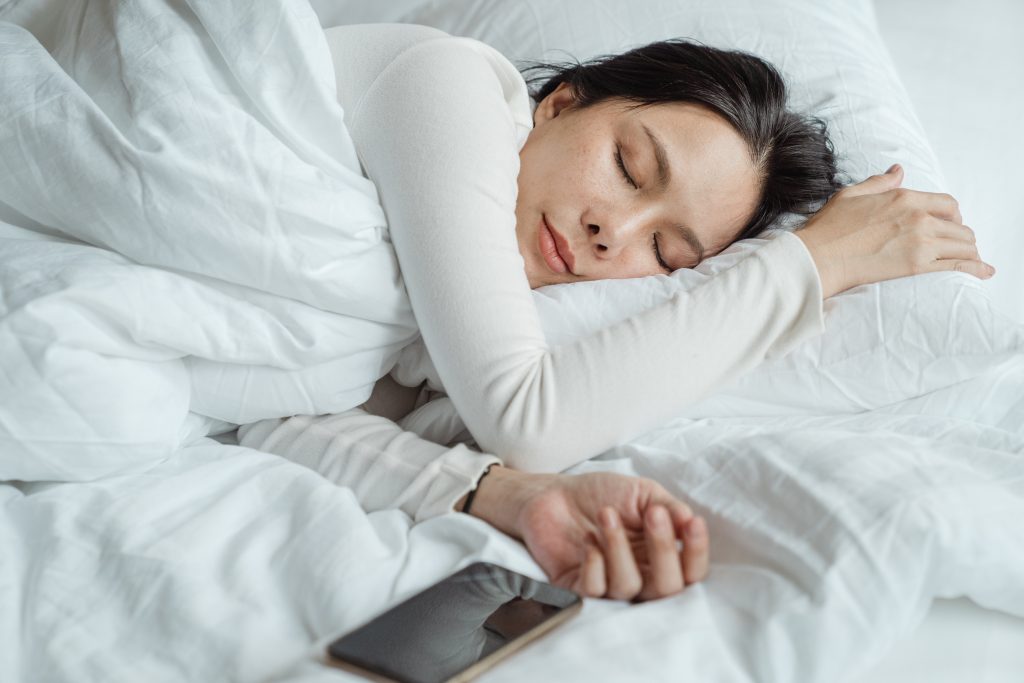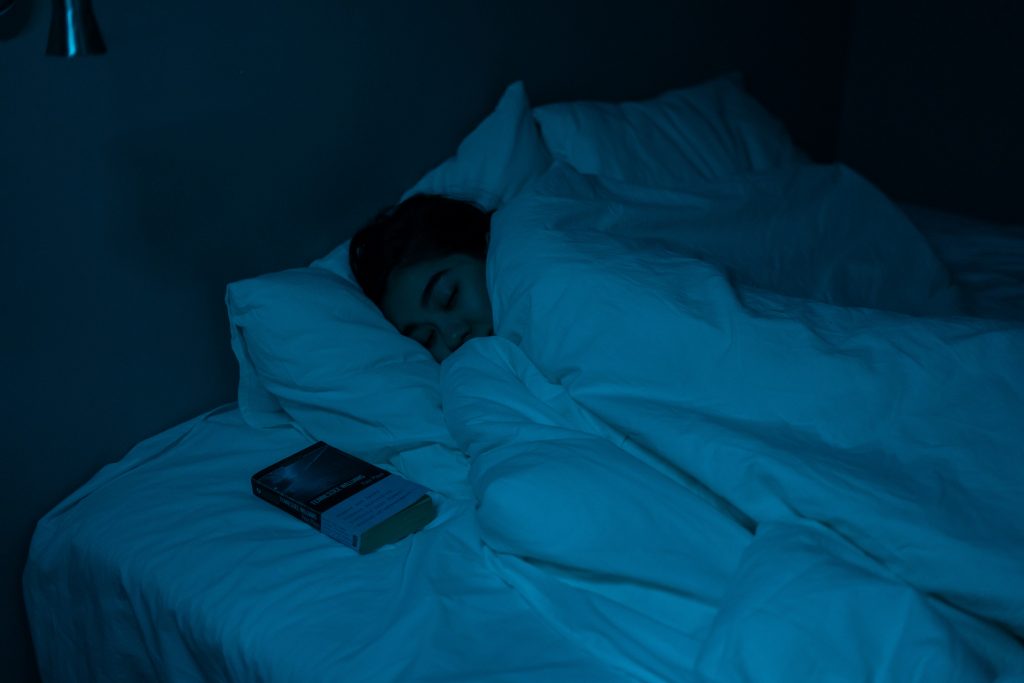Weighted blankets are a popular sleep tool that you may have heard of. It is created to give the user the feeling of being hugged or cuddled during their sleep. Many people claim that this difference is what allows them to achieve better and deeper periods of sleep, with some speaking about getting rid of sleeping disorders such as insomnia. Those who use a weighted blanket say it makes you feel good as it’s wrapped around you while you sleep.
Weighted blankets are a recent phenomenon in the medical industry, but they’re growing in popularity. The idea that these blankets can cure and alleviate almost all sleeping disorders is an appealing one for many people. But what exactly do weighted blankets do? And how effective are they? Read on to find out. For more info, check out our article why buy a weighted blanket?
What is a weighted blanket?

A weighted blanket is a blanket that weighs more than normal. The weight is usually evenly distributed and used to address different needs such as sleep disorders, autism or other forms of anxiety. It uses forms of pressure therapy that can lower the heart rate and make adults and children feel less restless.
What are they made from?
Weighted blankets are made from fleece, cotton or polyester. They can be folded in different styles to match the user’s preferences. Some users wrap them around their feet while some others place them over their shoulders. To create a dream-like sensation, weighted blankets are often enhanced with aromatherapy that spreads the user’s favourite scent throughout the room.
Uses
There are three main uses of weighted blankets: calming, sleep and autism/ADHD (attention deficit hyperactivity disorder) treatment. The calming effect is felt when the user’s body sinks into a soft blanket and it offers a comfortable feeling. Also, weighted blankets are designed to make the user feel like he is being hugged which induces relaxation. For the best weighted blankets available, check out our review of them.
How do weighted blankets work?
A weighted blanket is made from layers of materials that are either filled with polyester pellets, high-density foam or some other material.
The first layer of the weighted blanket is usually a soft fabric (cotton, duvet style) and it also serves as a cover. Depending on how heavy you want your blanket to be, several layers of the same or different fabrics are sewn together. They all have one thing in common: they are filled with materials that weigh up to 15 pounds!
Weight
That means it will be around 4 times heavier than your traditional blankets. When you just hold these blankets, you can feel the weight is too much for a regular blanket. As soon as you lay under them, though, the sensation changes; you feel a heavy pressure on your body. They are designed to be as comfortable as possible.
This means that each weight is carefully placed to create an even feeling of pressure on your body. These blankets are used as a therapy for the most varied syndromes: sleep disorders, anxiety and stress relief are just a few examples. They also help develop new habits that will improve your way of life, such as daytime naps, assisting with weight reduction or even helping you to feel more relaxed after a workout.
How do weighted blankets improve sleep?

The core benefit of using weighted blankets is relaxation. They have been used by different cultures to induce sleep and promote tranquillity among people. Some of them include the Minoans for sleeping soundly, Native Americans to alleviate headaches or Romans who used them during massage therapy. They usually weigh a couple of pounds but they can be heavier if the user asks for one.
A weighted blanket has a purpose. It helps calm the body which improves sleep. The weight is distributed onto the body evenly, thus making one feel secure and relax the mind at night time. Instead of sleeping pills or stress relievers, a blanket that comes with weight can be a good alternative to help one sleep better.
Benefits of using a weighted blanket
If you are looking for the benefits of weighted blankets, there are some areas where they could make a difference:
Benefits from sleeping with these blankets include deeper and more restful sleep; reduced stress levels and anxiety as well as instant relaxation, especially when someone is using them for the first time.
It can help those who have autism, ADD and ADHD as well as several other medical conditions whether minor or severe. Weighted blankets can also be used to support muscle therapy, especially when combined with other treatments such as massage or physical therapy to progress one’s recovery. Can you use a weighted blanket for kids? Yes. Children with or without medical conditions can also benefit from these blankets.
Do weighted blankets help with Anxiety/Autism/ADHD?
Anxiety
This blanket has been shown through research to help deal with the effects of Anxiety. The added weight on your body helps to reduce anxiety (through the use of Deep Touch Pressure; DTP). This makes you feel calmer and more at peace.
How does a weighted blanket work in helping with Anxiety?
Deep Pressure stimulates the pressure receptors in your body, which is closely associated with touch and or pain. The research has shown that when you are touched(Which is how a weighted blanket works), serotonin levels increase by up to 67%, which has also been shown to reduce sensitivity, anxiety and depression.
The feeling of being hugged by a weighted blanket is therapeutic, to some it makes them feel like they are being held and that they have no worries in the world. It has been scientifically proven through research that the warmth you feel from this blanket can increase serotonin levels in one’s brain which interrupts the “Fight or Flight” response.
Autism
A weighted blanket can help many on the autism spectrum, it is an alternative therapy that may be considered by those who have not found success with other therapies or medications. Blankets are used for several different reasons from helping with sensory needs, emotions to improving sleep.
When we have Autism( and even other disorders), our senses can sometimes be more sensitive than the average person. This can cause certain things to bother us or even overwhelm us in some cases such as lights, sounds, textures and smells. It is these triggers that can sometimes manifest symptoms of anxiety or a meltdown( for those with autism spectrum disorder). The key here is that different things will trigger each person.
How does a weighted blanket work in helping with Autism?
The number one thing that can help with sensory regulation is pressure. The right weight blanket can provide deep touch pressure. This causes a sense of calm and relaxation. There are many different ways weighted blankets work on the brain, here are a few :
1) Deep Touch Pressure also stimulates serotonin, our “happy chemical”. As serotonin increases, so do our moods and feelings of happiness.
2) Deep Touch Pressure also stimulates the release of oxytocin. This hormone is associated with attachment and bonding. It helps to reduce anxiety and social discomfort in children with autism.
3) Deep Touch Pressure is also thought to help regulate sensory processing via the somatosensory cortex.
4) Deep Touch Pressure is also thought to decrease cortisol levels, the stress hormone.
ADHD
Using a weighted blanket can provide many benefits for people who suffer from ADHD. Some of these are a reduction of stress and anxiety promoting better sleep. Further, an increase in serotonin levels helps stabilize moods, thus inducing greater feelings of calm and comfort.
There are several reasons why someone with ADHD may find it difficult to sleep. They include anxiety, depression, an overactive mind and the inability to unwind or relax. A person who suffers from ADHD usually has trouble getting on a regular sleeping schedule because they have difficulty relaxing at night and can often struggle to fall asleep.
The use of a weighted blanket can help to address these problems and provide the necessary support needed for achieving restful sleep. Check out our articles on sleeping with ADHD and oversleeping and ADHD.
How does a weighted blanket work in helping with ADHD?
In addition, studies have shown that ADHD and sleep disorders are both highly correlated with low serotonin levels. Serotonin is a neurotransmitter that plays an important role in mood stabilization. By using a weighted blanket, you can stimulate a release of serotonin, which helps to promote feelings of calm and comfort.
Balancing temperature
Researchers have also found that weighted blankets can help balance the body’s temperature. In individuals with ADHD, this effect is further strengthened because their sleep patterns are often disrupted and they awake frequently during the night. Cold hands and feet tend to be a common symptom of people with ADHD, and a weighted blanket can help provide the necessary warmth needed to alleviate this.
Weighted Blankets and deep pressure stimulation

A weighted blanket can be described as a heavy comforter that is placed over the body to offer comforting pressure. Although weighted blankets are quite common in homes, they are seldom used by people who have Cerebral Palsy.
The comfort feels like being cuddled into your mothers’ arms or lying on top of a fluffy mattress while you rest in bed. Most people describe it as being in a comfy hug all night.
Cerebral Palsy
Some people who use weighted blankets do it just because they find them comfortable or relaxing. However, CP patients have found a more practical purpose in using these kinds of blankets. They are used as ‘deep pressure stimulation’ designed to reduce muscle tension, increase relaxation and help with motor control and balance problems.
Deep pressure
Weighted blankets are a great way to provide deep pressure touch stimulation (one of the five senses) to the body.
Deep pressure touch is essential in treating SPD (sensory processing disorder) as it greatly improves proprioception, or how your body recognizes where it is in space and time. This proprioceptive sense is what helps individuals understand if they are hungry, thirsty, cold or hot. weighted blankets provide this deep pressure and have been found to help better than other types of weighted products.
More benefits of using a weighted blanket

Pain Relief and Better breathing
This kind of blanket is also used by people suffering from chronic pain. As it provides the right amount of pressure, they find relief for their muscle spasms and have a better night’s sleep. It can also stimulate more regular breathing as the body’s nervous system is far calmer.
Relieve stress
There are many health benefits of a weighted blanket. Firstly, they help improve sleep quality and even reduce the chances of depression. They provide adequate pressure so that your body is relaxed during sleep within a few minutes.
Tossing and Turning
The weight helps lessen tossing and turning. The “deep pressure stimulation” provided by the blanket improves the production of serotonin in the brain which keeps you away from stress, mood swings and depression.
Heart rate
As far as adults are concerned, the blanket helps improve circulation and reduces heart rate. It encourages one to breathe in a lucid manner which allows one to get back into sleep more easily if they wake up during sleep. For people with autism or Asperger’s syndrome, these blankets can help relax them while reducing their stimming activities.
How to make a weighted blanket
There is such thing as a DIY weighted blanket. Though we generally recommend buying a professionally made one for best results, you can make one at home. Here are steps for making sleeping bag types of weighted blankets.
Step 1:
Figure out your material list. This is the first step to making weighted blankets, and it’s important to have everything you need before you start. You will need two main types of materials for this project: fabric and filling. Fabric choices are up to you, but make sure to choose something that won’t fray or pill. The filling is more important. You can use anything from soft toys to plastic bottles filled with sand or rocks for your weighted blanket. To make one that weighs about 6 lbs, you’ll need a total of 180 oz (about 14 lbs).
Step 2:
Cut the fabric into rectangles, and then sew them together to form a big rectangle. A weighted blanket should be 10 inches longer than your particular mattress, so don’t forget to add this when figuring out how big to cut your pieces. Once you have sewn the pieces together, it is time to sew on all of the extra fillings. We recommend a minimum of 2′ wide strips at three different points along each side of the blanket (bottom, middle, and top) to secure all of the fillings in place.
Step 3:
Sew on a long piece of fabric to create a hood for your weighted blanket. This is optional but will work great if you want to attach it around your head when sleeping. Make sure that this extra-long strip is long enough to wrap all the way around your body when sleeping, but not so long that it drags on the floor. You can attach a string to this hood for easy closing and opening if you want.
Weighted Blanket Fillers
Weighted blankets can be filled with beads; some of the higher-end ones are filled with glass beads. They’re are designed to be more comfortable than plastic pellets because they don’t make any noise. However, they tend to move around within the blanket when it is used.
In short, these blankets are weighty in more than one way and are very effective when it comes to keeping someone comfortable during sleep. People who use them also tend to wake up feeling refreshed and rejuvenated.


















12 Comments